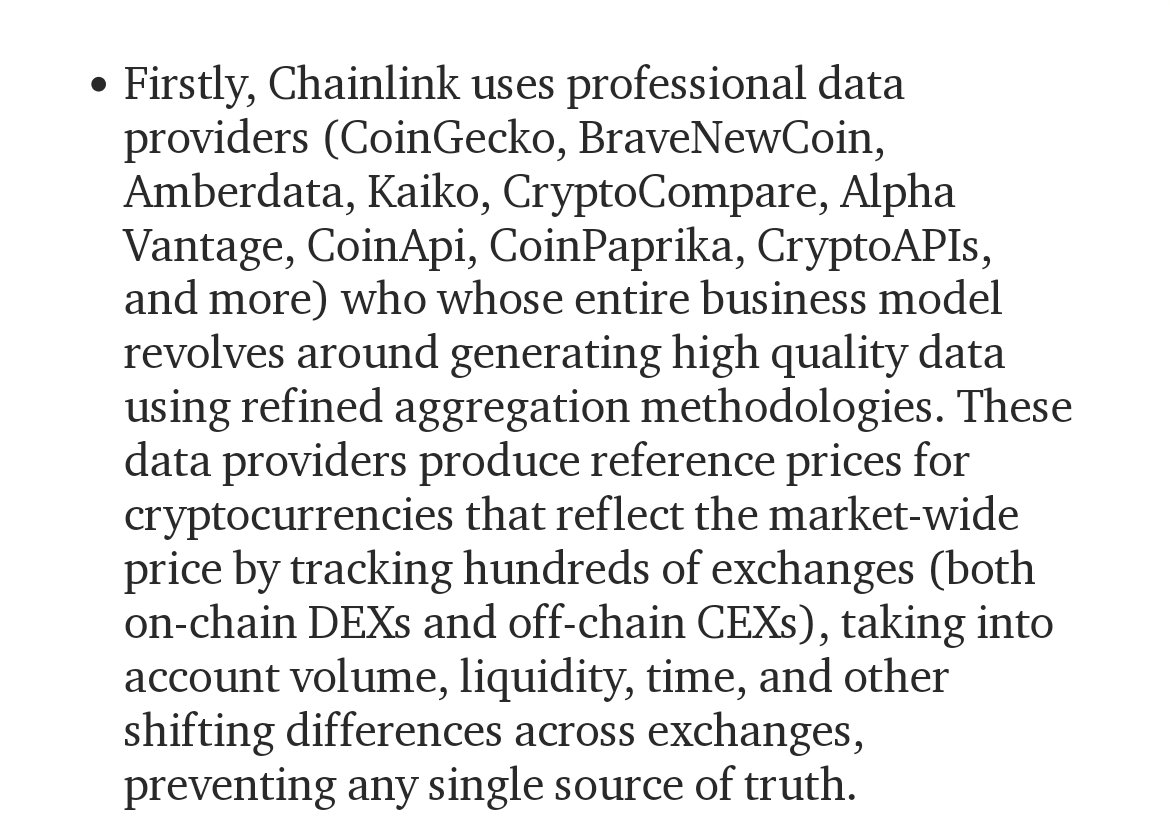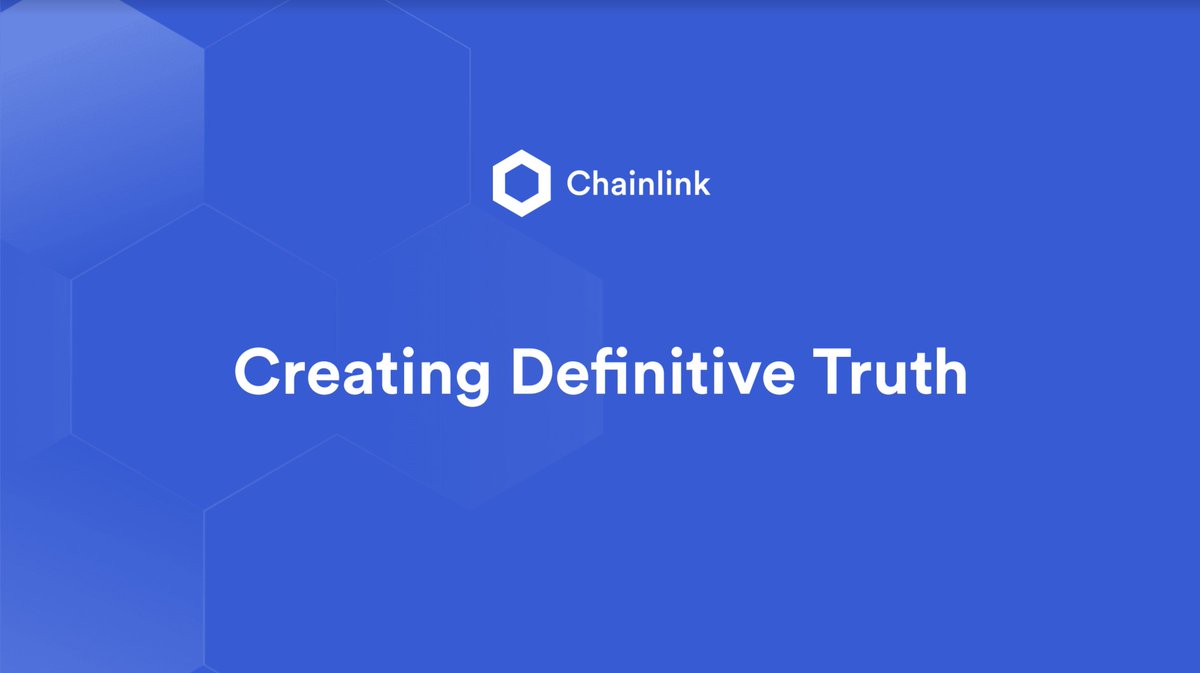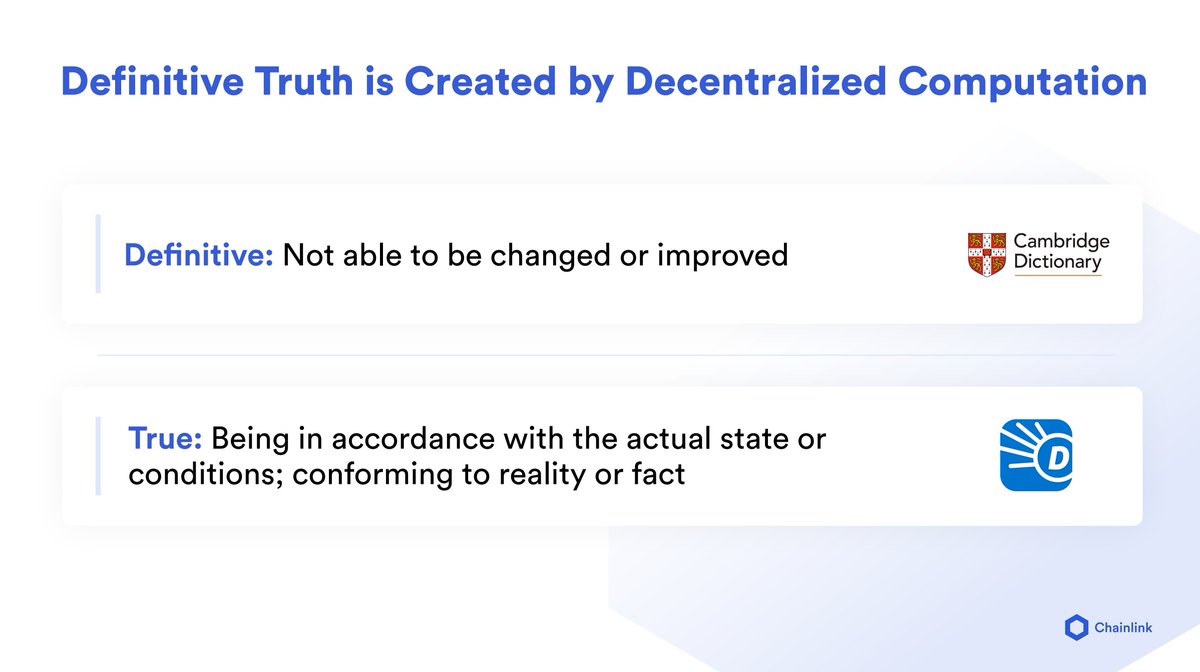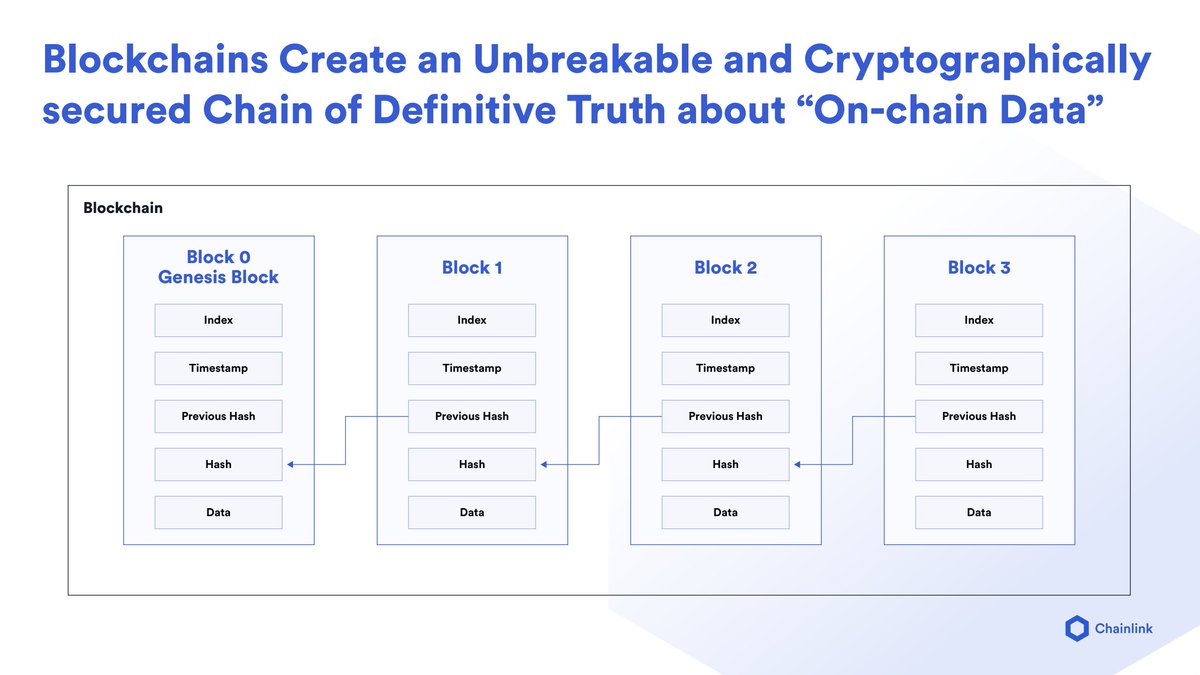
1/ Welcome to a deep dive thread into our latest @SmartContent777 article
I'll explore the God Protocols and how #Chainlink is the last piece of the puzzle to making it a reality
This will be quite a dense thread so buckle up and enjoy the ride
smartcontentpublication.medium.com/completing-the…
I'll explore the God Protocols and how #Chainlink is the last piece of the puzzle to making it a reality
This will be quite a dense thread so buckle up and enjoy the ride
smartcontentpublication.medium.com/completing-the…
2/ In 1997, computer scientist Nick Szabo (@NickSzabo4) described what he termed the “God Protocols"
This is an envisioned set of computer protocols that could facilitate the execution of an agreement between independent parties without any bias, error, or privacy concerns
This is an envisioned set of computer protocols that could facilitate the execution of an agreement between independent parties without any bias, error, or privacy concerns
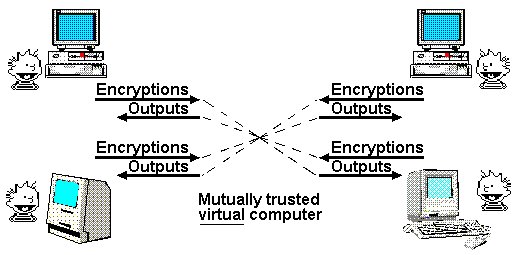
3/ Through this, contract participants would consistently get what they are owed, when they are owed, and from whom they are owed, based on a totally objective view of reality
We believe that the combination of blockchains, smart contracts, and oracles are making this a reality
We believe that the combination of blockchains, smart contracts, and oracles are making this a reality
4/ Broadly speaking each one of these pieces serves a specific role in bringing the God Protocols to fruition
Blockchain -> The physical body
Smart contracts -> The analytical mind
Oracles -> The peripheral senses
Let's explore each of these
Blockchain -> The physical body
Smart contracts -> The analytical mind
Oracles -> The peripheral senses
Let's explore each of these
5/ Blockchains are global computer networks that operate as an immutable ledger that allows users to transfer and self-custody digital assets
By virtue of being decentralized and permissionless, anyone in the world can verify the current and historical state of the ledger

By virtue of being decentralized and permissionless, anyone in the world can verify the current and historical state of the ledger
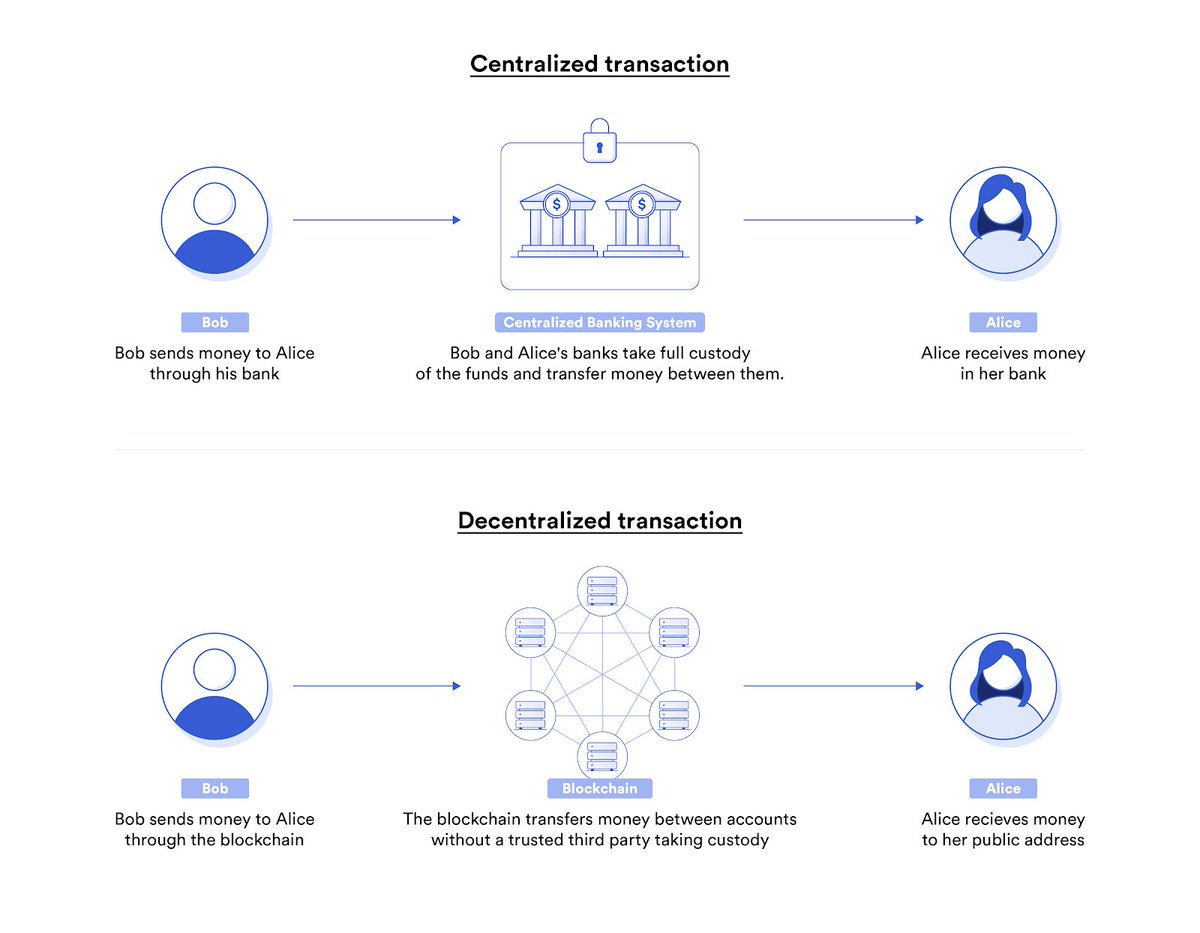
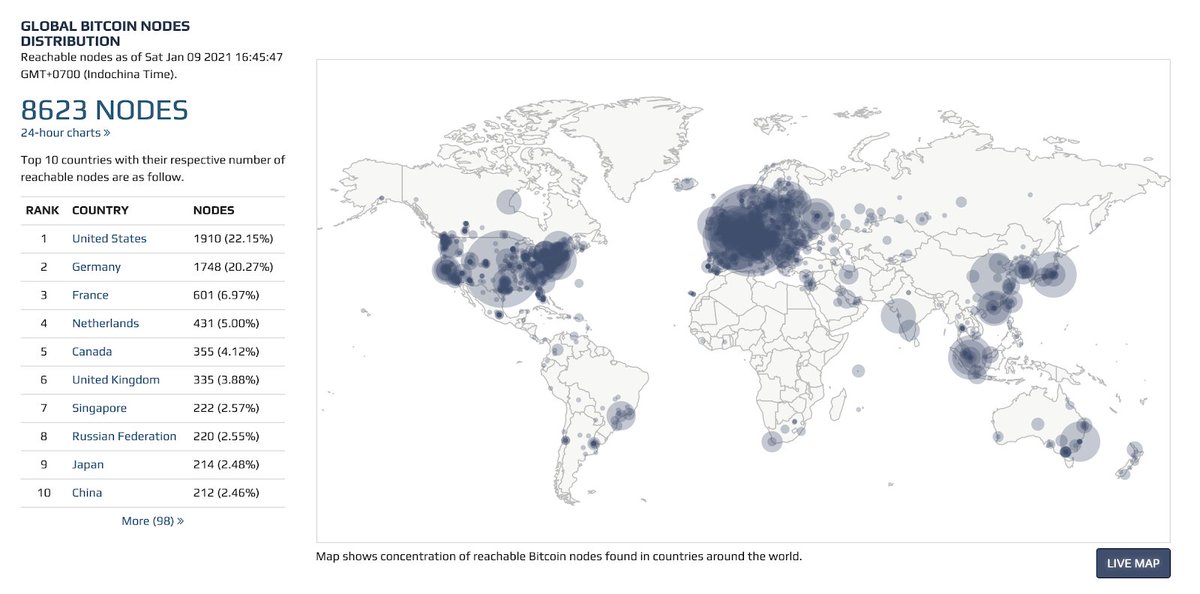
6/ Transactions are validated by every computer in the network and aggregated into blocks which are then chained together forever
While #Bitcoin was the initial implementation of the blockchain, we have since seen many variations providing different trade-offs
While #Bitcoin was the initial implementation of the blockchain, we have since seen many variations providing different trade-offs

7/ On top of blockchains are smart contracts, essentially "if x, then y" coded logic
While Bitcoin provided very simple contracts, #Ethereum provided the ability to create 'programmable smart contracts' creating an explosion of use cases such as #DeFi, DAOs, and beyond

While Bitcoin provided very simple contracts, #Ethereum provided the ability to create 'programmable smart contracts' creating an explosion of use cases such as #DeFi, DAOs, and beyond
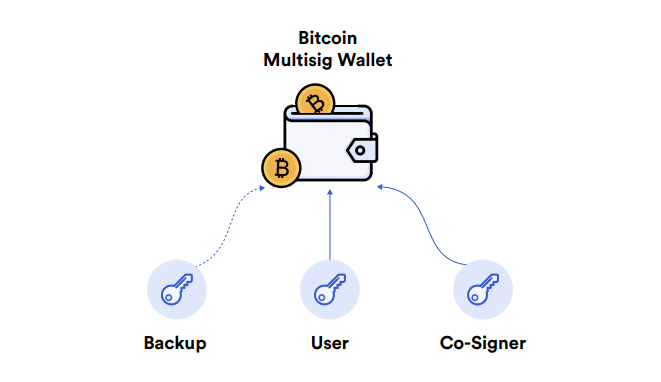
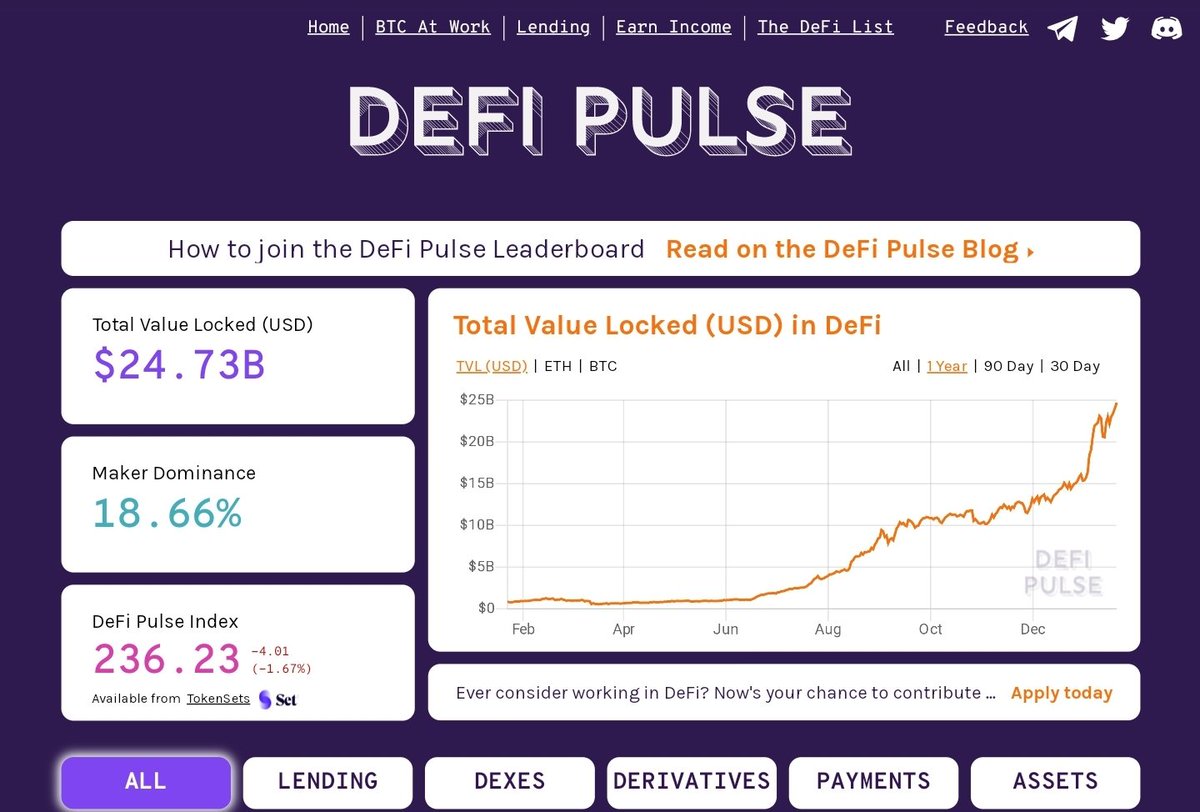
8/ One key problem however, smart contracts cannot connect to the outside world beyond the blockchain network
This necessitates the use of an "oracle" which provides a bridge between the on-chain and off-chain environments
Oracles are bi-directional, enabling inputs and outputs
This necessitates the use of an "oracle" which provides a bridge between the on-chain and off-chain environments
Oracles are bi-directional, enabling inputs and outputs

9/ Most valuable datasets like financial asset prices, weather conditions, sports scores, IoT sensors, as well as off-chain fiat payments all exist outside the blockchain
The vast majority of valuable smart contracts require oracles so they can access these datasets and services
The vast majority of valuable smart contracts require oracles so they can access these datasets and services
10/ However, centralized oracles are not an adequate solution to this problem as they represent a single point of failure that can manipulate the outcome of contracts
Why use smart contracts if it's going to be executed (and thus controlled) by a single entity?
Why use smart contracts if it's going to be executed (and thus controlled) by a single entity?
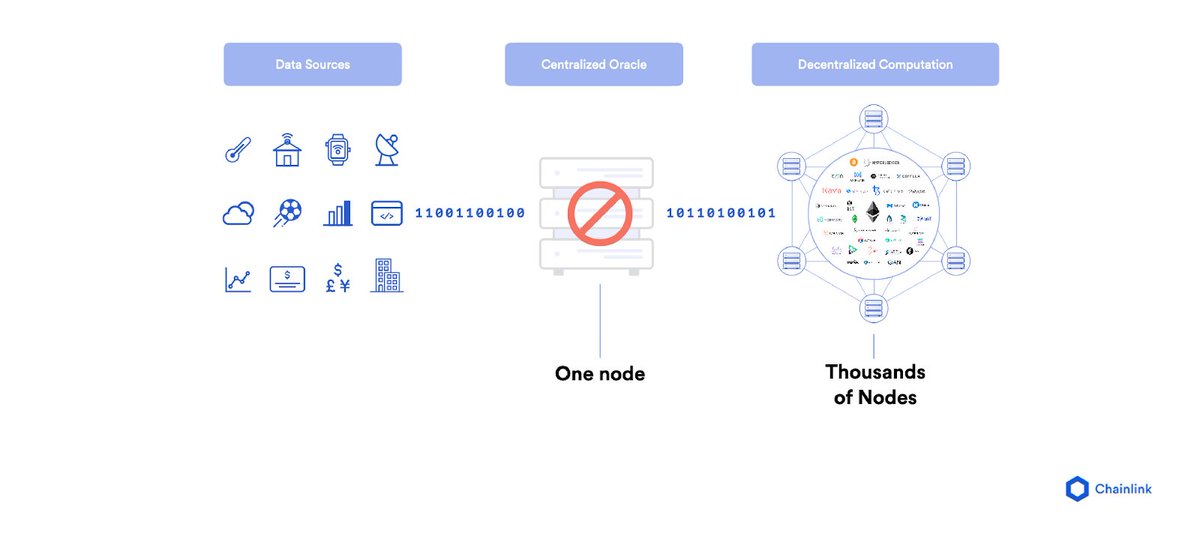
11/ This is where #Chainlink comes into play
Launched in 2019 as the first decentralized oracle network, Chainlink has since become the dominant standard in how smart contracts interact with the real world
Chainlink oracles now secure over $7B for the #DeFi ecosystem alone
Launched in 2019 as the first decentralized oracle network, Chainlink has since become the dominant standard in how smart contracts interact with the real world
Chainlink oracles now secure over $7B for the #DeFi ecosystem alone
12/ Although other oracle implementations exist, nothing comes close to Chainlink's technology, market adoption, development team, token economics, and potential addressable market
Just like the internet, oracles are a winner take all technology
smartcontentpublication.medium.com/chainlinks-net…
Just like the internet, oracles are a winner take all technology
smartcontentpublication.medium.com/chainlinks-net…
13/ However, it's important to emphasize that Chainlink is not a single monolithic network
It is a framework for building oracle networks that can consist of any node operators, data sources, aggregation strategies, update frequency, and various other security parameters
It is a framework for building oracle networks that can consist of any node operators, data sources, aggregation strategies, update frequency, and various other security parameters
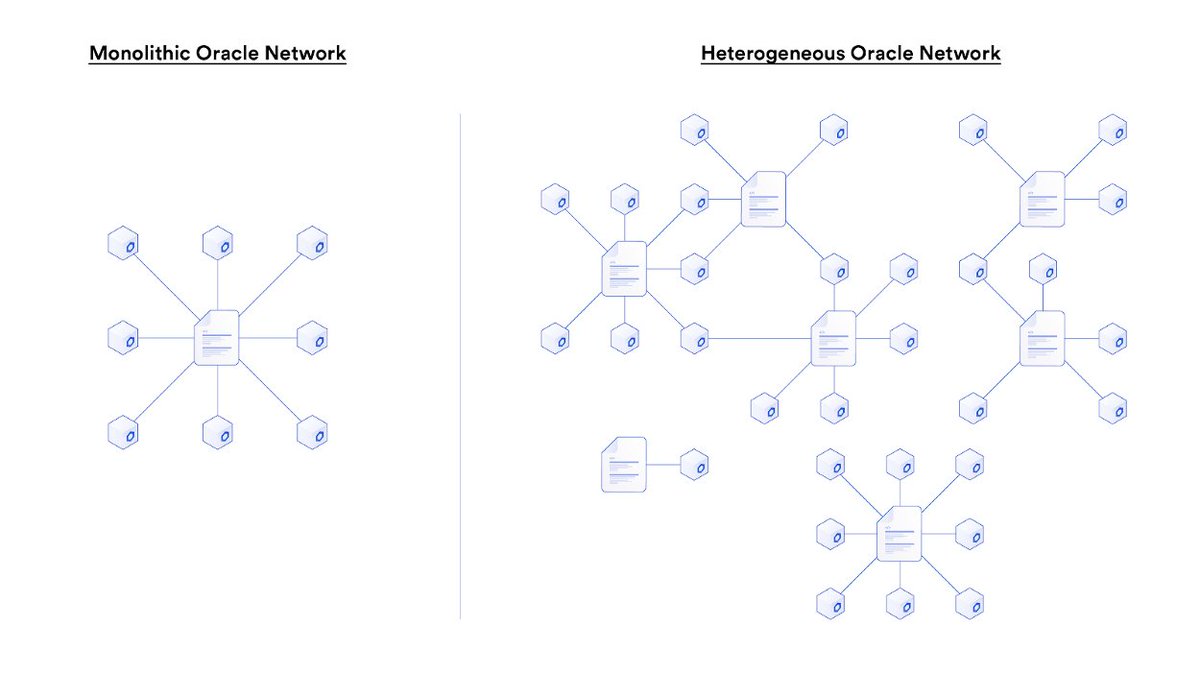
14/ This creates a free market economy where nodes compete among one another for jobs
Nodes are not standardized, but can specialize in providing specific data types and oracle services
This allows entities with exclusive and permissioned APIs to maintain access control
Nodes are not standardized, but can specialize in providing specific data types and oracle services
This allows entities with exclusive and permissioned APIs to maintain access control
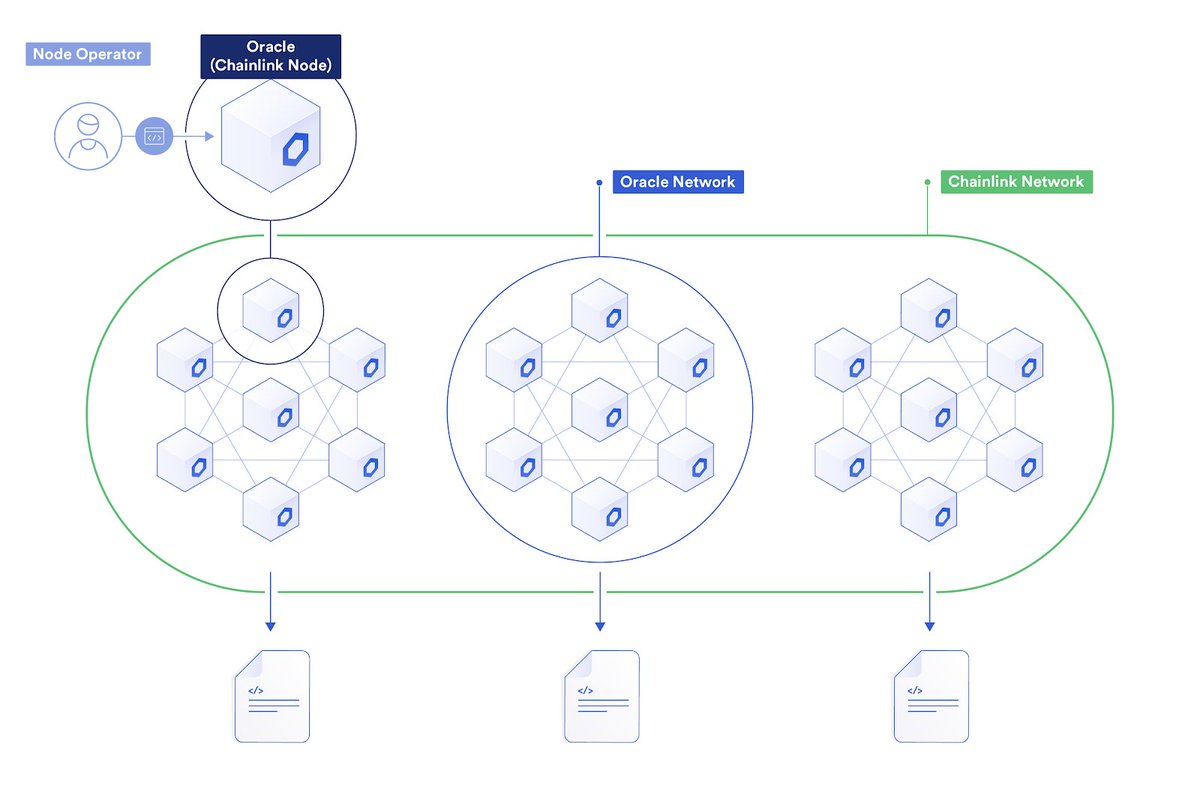
15/ The Chainlink Network consists of two types of nodes
1) Security reviewed node operators (DevOps teams) with publically known identities vetted by the CL team
2) Non-security reviewed nodes run by community members or traditional data providers with a proven history
1) Security reviewed node operators (DevOps teams) with publically known identities vetted by the CL team
2) Non-security reviewed nodes run by community members or traditional data providers with a proven history
16/ Running a Chainlink node is entirely permissionless, however security reviewed and data provider run nodes bootstraps the network providing Sybil resistance and uptime garuentees
Non-security reviewed community nodes are useful for use cases beyond data delivery
Non-security reviewed community nodes are useful for use cases beyond data delivery

17/ Chainlink nodes bring data onto the blockchain by fetching from Application Programming Interfaces (APIs)
In particular, Chainlink nodes can connect to any free open APIs or paid authenticated APIs, allowing for all the world's data to be brought on-chain
In particular, Chainlink nodes can connect to any free open APIs or paid authenticated APIs, allowing for all the world's data to be brought on-chain
18/ There are two models through which #Chainlink brings data on-chain
1) A backwards compatible model where exisiting nodes transfer data between API providers and blockchains
2) A advanced model where data providers run their own Chainlink node to provide signed data on-chain
1) A backwards compatible model where exisiting nodes transfer data between API providers and blockchains
2) A advanced model where data providers run their own Chainlink node to provide signed data on-chain
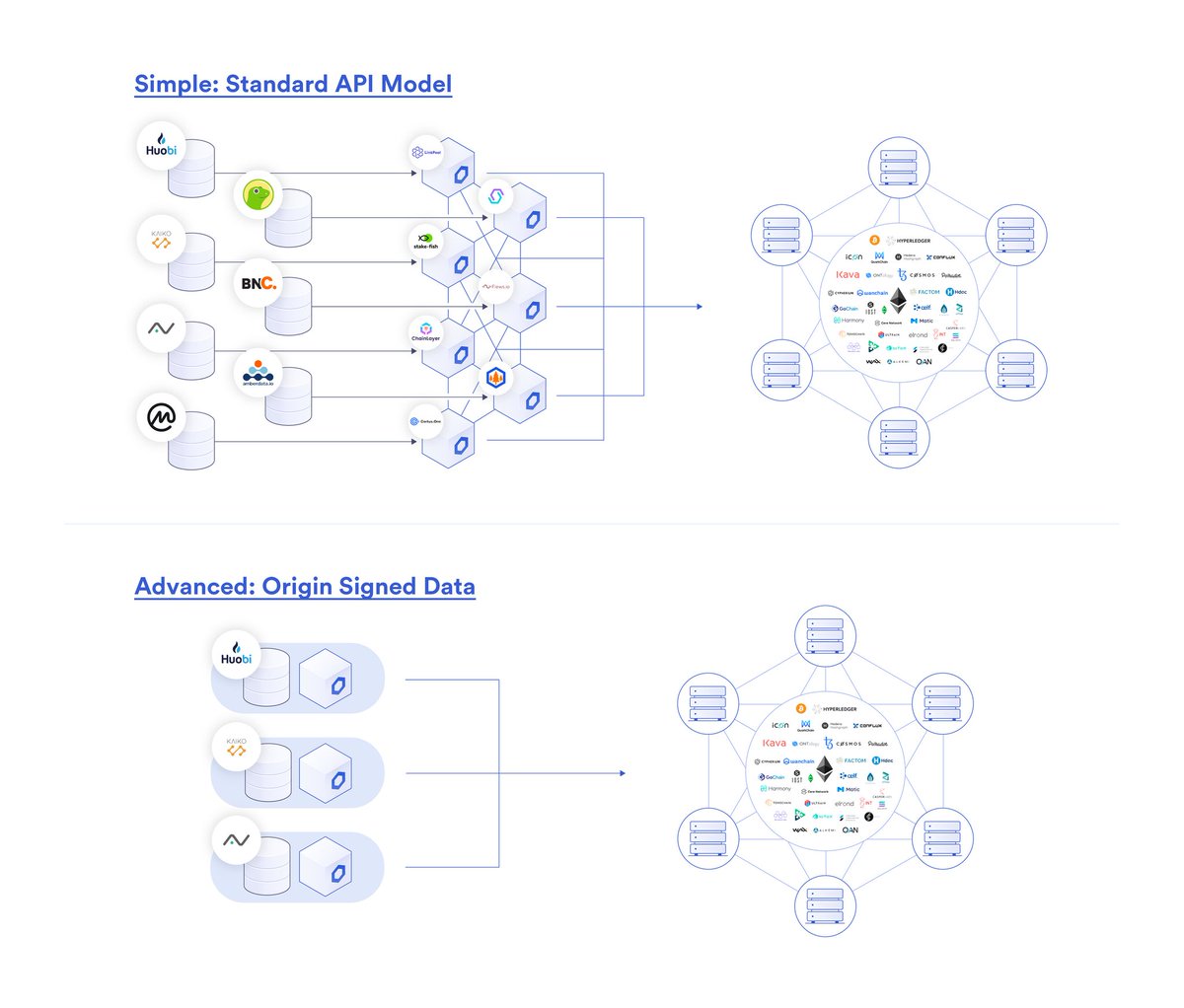
19/ Chainlink is also natively blockchain agnostic meaning it can deliver external data to smart contracts on any network
This futureproofs the network and allows data providers to sell their APIs to all environments simultaneously
ETH, ATOM, DOT, AVAX, Diem, and beyond
This futureproofs the network and allows data providers to sell their APIs to all environments simultaneously
ETH, ATOM, DOT, AVAX, Diem, and beyond
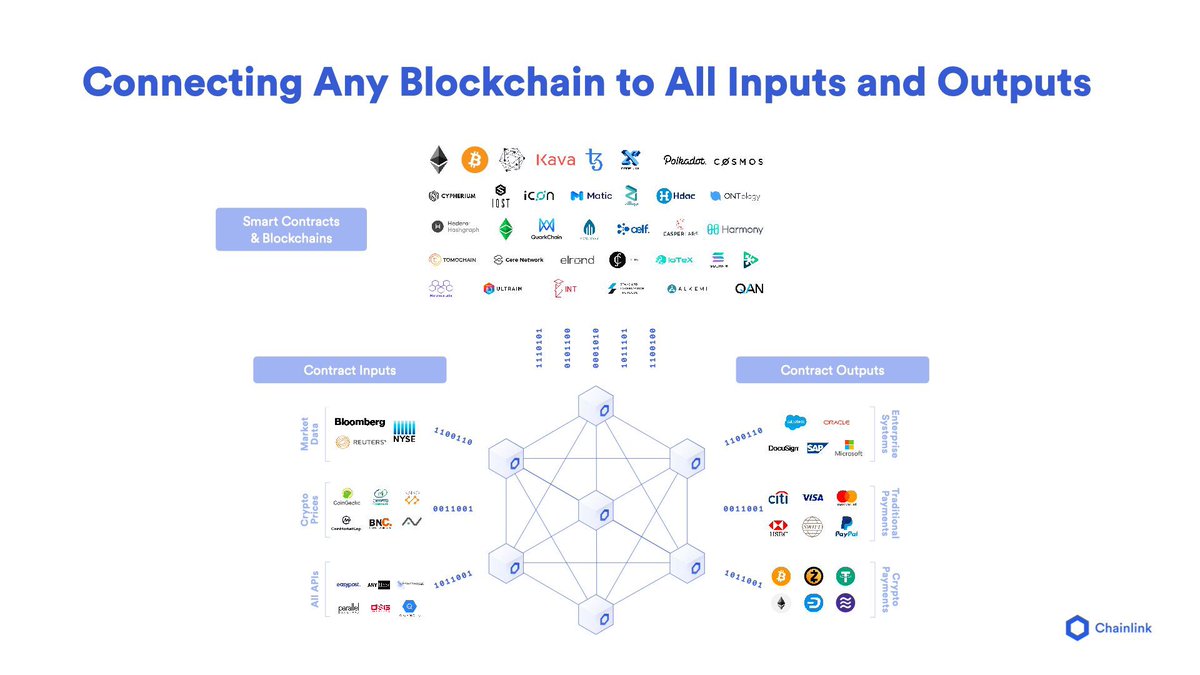
20/ Being highly flexible and secure is major key to becoming a standardized solution
Chainlink takes a defense in-depth approach to this by employing decentralization, data signing, crypto-economics, reputation systems, and privacy support
Chainlink takes a defense in-depth approach to this by employing decentralization, data signing, crypto-economics, reputation systems, and privacy support
21/ Decentralization involves three layers of aggregation including
1) Multiple independent node operaters for data delivery
2) Multiple independent data providers for data sourcing
3) Selection of data providers who aggregate from a multitude of sources like exchanges

1) Multiple independent node operaters for data delivery
2) Multiple independent data providers for data sourcing
3) Selection of data providers who aggregate from a multitude of sources like exchanges

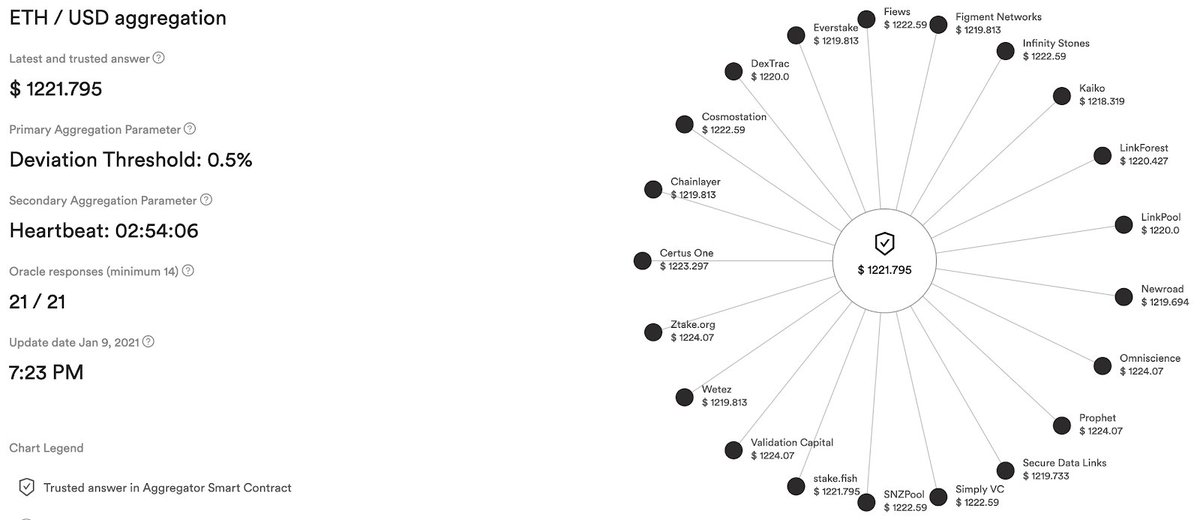
22/ Chainlink oracles also operate at least two versions of the Chainlink software providing client diversity to protect against bugs bringing the network down
Circuit breakers are also offered which trip if a new update deviates too far from the previous on-chain update
Circuit breakers are also offered which trip if a new update deviates too far from the previous on-chain update
23/ Chainlink nodes also cryptographically sign their data and publish it on-chain as an immutable record
This provides definitive proof that data came from a specific node, important for data provider run Chainlink nodes
This provides an unprecedented level of transparency
This provides definitive proof that data came from a specific node, important for data provider run Chainlink nodes
This provides an unprecedented level of transparency
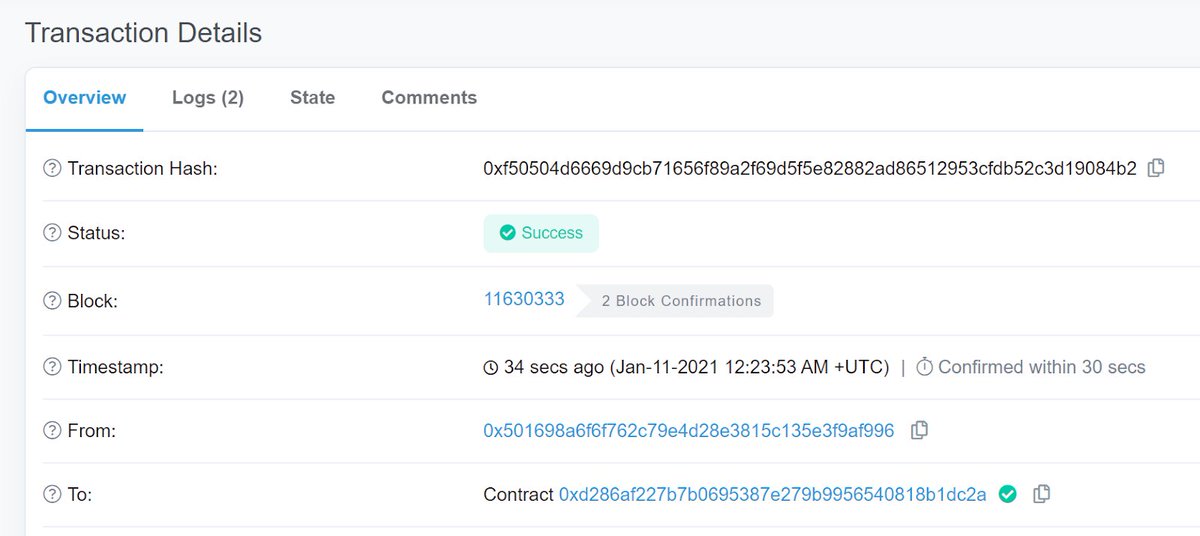
24/ Because each node signs their data, this information can be used within reputation systems which allow users to filter nodes based on past performance
This is in combination with nodes' off-chain reputation, certifications, geographic location, LINK holdings/stake, and more
This is in combination with nodes' off-chain reputation, certifications, geographic location, LINK holdings/stake, and more

25/ Chainlink is also developing numerous data and computation privacy solutions including
1) DECO which uses ZKPs to prove facts about web sessions
2) Mixicles for privacy preserving DeFi contracts/payments
3) Town Crier using trusted hardware for a black box environment
1) DECO which uses ZKPs to prove facts about web sessions
2) Mixicles for privacy preserving DeFi contracts/payments
3) Town Crier using trusted hardware for a black box environment
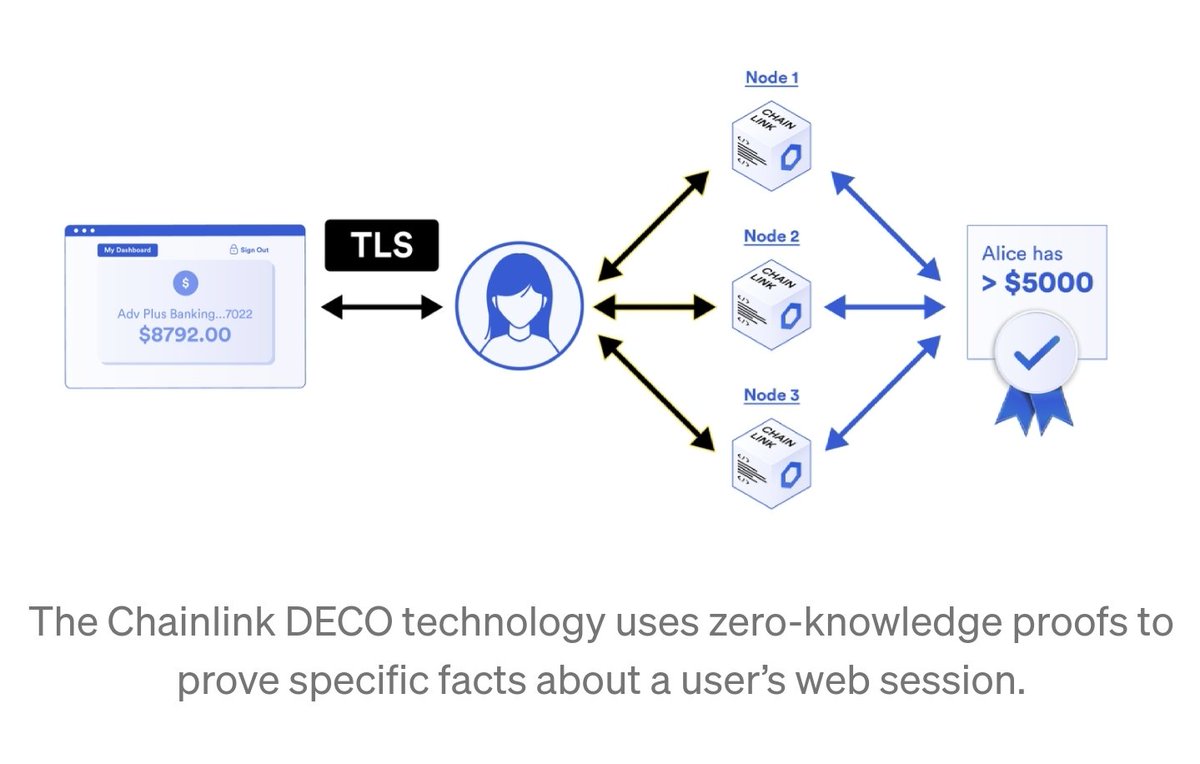
26/ This brings us the core functionalities of the #Chainlink Network with the most widely known being data sourcing & delivery
This connects smart contracts to data about the state of the real world such as the price of oil, weather in New York, GPS location of a shipment, etc
This connects smart contracts to data about the state of the real world such as the price of oil, weather in New York, GPS location of a shipment, etc

27/ In addition to the above, Chainlink oracles can also perform various types of off-chain computation
- Aggregating multiple data sources into a single price point
- Generate verifiable randomness
- Operate layer 2 validators
- Run Keeper functions
- Any general computation
- Aggregating multiple data sources into a single price point
- Generate verifiable randomness
- Operate layer 2 validators
- Run Keeper functions
- Any general computation

28/ As a blockchain agnostic network, Chainlink serves as a single integration gateway where enterprises, institutions, and governments can get their systems 'blockchain enabled'
This concept was explored in a recent whitepaper by the World Economic Forum
www3.weforum.org/docs/WEF_Inter…
This concept was explored in a recent whitepaper by the World Economic Forum
www3.weforum.org/docs/WEF_Inter…

29/ Using Chainlink as a blockchain abstraction layer, data and API providers can also quickly and seamlessly begin selling their data to smart contracts through their own Chainlink node
Dozens of data providers are already or are planning to run a Chainlink node in-production
Dozens of data providers are already or are planning to run a Chainlink node in-production
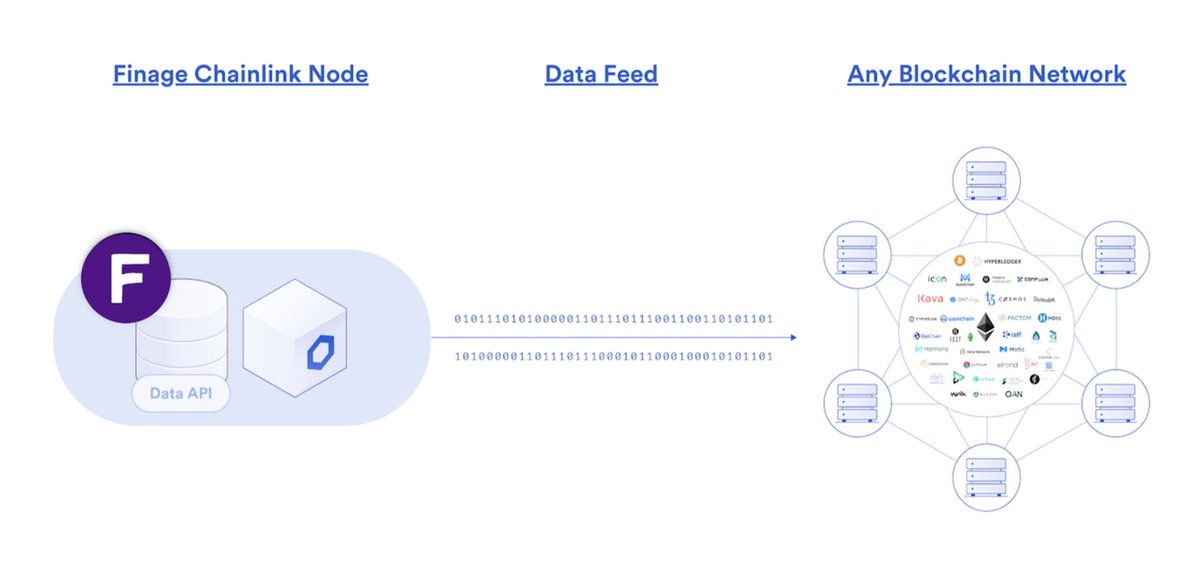
30/ Powering the #Chainlink Network is the native token $LINK which is used in order to
1) Pay Chainlink nodes for their oracle services
2) Subsidize the growth of the network until self-sustainability
3) Provide cryptoeconomic security through implicit and explicit staking
1) Pay Chainlink nodes for their oracle services
2) Subsidize the growth of the network until self-sustainability
3) Provide cryptoeconomic security through implicit and explicit staking
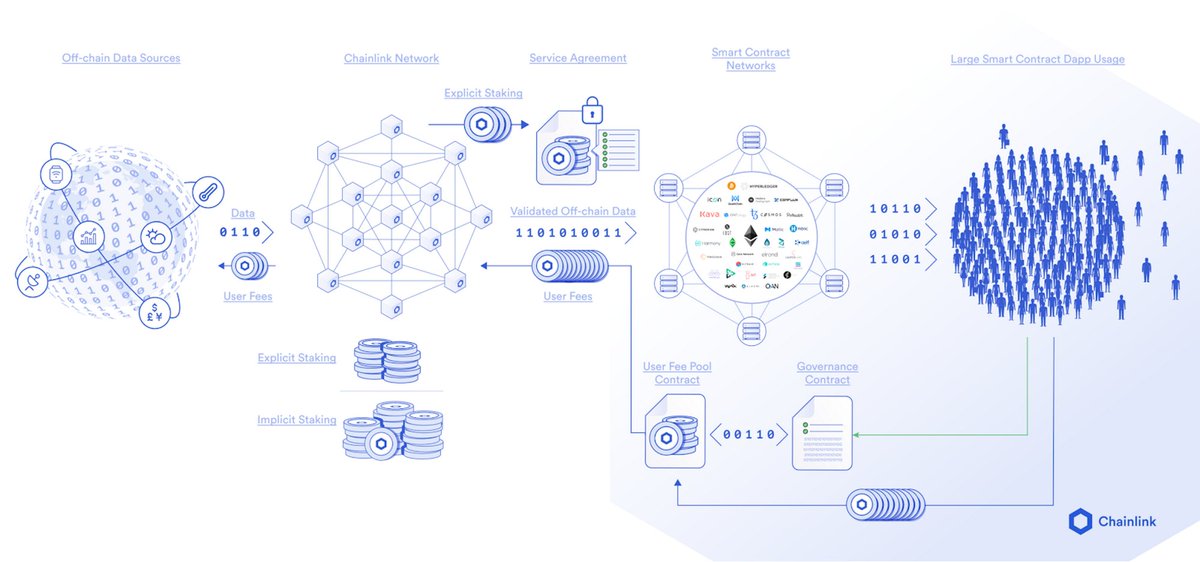
31/ Implicit Staking
Because every node is paid in $LINK, they have a strong incentive to maintain a secure and reliable Chainlink network to ensure future revenue streams
Malicious activity would cause the token value to drop, reducing the value of nodes' holdings and revenue
Because every node is paid in $LINK, they have a strong incentive to maintain a secure and reliable Chainlink network to ensure future revenue streams
Malicious activity would cause the token value to drop, reducing the value of nodes' holdings and revenue
32/ Explicit Staking
Chainlink nodes can be required to hold or stake specific amount of $LINK in a service agreement to back their oracle services
This staked $LINK can be directly slashed for malicious behavior, further ensuring reliable and honest oracle services
Chainlink nodes can be required to hold or stake specific amount of $LINK in a service agreement to back their oracle services
This staked $LINK can be directly slashed for malicious behavior, further ensuring reliable and honest oracle services
33/ This short term and long term financial punishments prevents undesirable network activity through a skin in the game approach
$LINK is the sole means of making payments, creating economic security, and growing a node operator’s business model within the Chainlink Network
$LINK is the sole means of making payments, creating economic security, and growing a node operator’s business model within the Chainlink Network
34/ Through the $LINK token subsidies, Chainlink is bootstrapping the network by
- Supporting the early launch of new projects
- Using a shared oracle network model lowering the per user costs
- Generating a growing Network Effect leading to more data being brought on-chain
- Supporting the early launch of new projects
- Using a shared oracle network model lowering the per user costs
- Generating a growing Network Effect leading to more data being brought on-chain

35/ The #Chainlink Ecosystem consists of a large number of oracle services such as
- Price Feeds
- Any API
- Randomness
- Proof of Reserve
- Data Privacy
- Transaction Ordering
- Keepers
- Layer 2 Validators
- Decentralized Identity
- Cross-Chain Communication
- Price Feeds
- Any API
- Randomness
- Proof of Reserve
- Data Privacy
- Transaction Ordering
- Keepers
- Layer 2 Validators
- Decentralized Identity
- Cross-Chain Communication
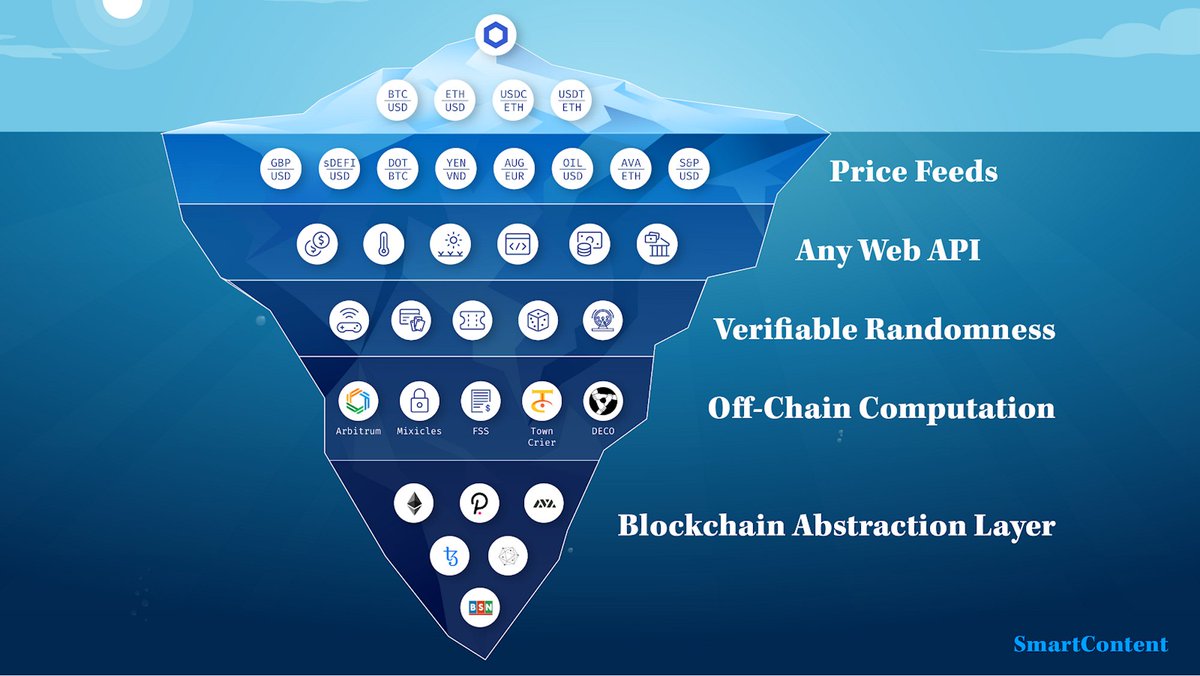
36/ Through these various oracle services, Chainlink has a large and growing ecosystem of hundreds of decentralized applications
Lending
Derivatives
Exchanges
Insurance
Stablecoins
Real World Assets
Rebase Tokens
Asset Management
Collectibles
Betting Markets
On-chain Gaming
Lending
Derivatives
Exchanges
Insurance
Stablecoins
Real World Assets
Rebase Tokens
Asset Management
Collectibles
Betting Markets
On-chain Gaming
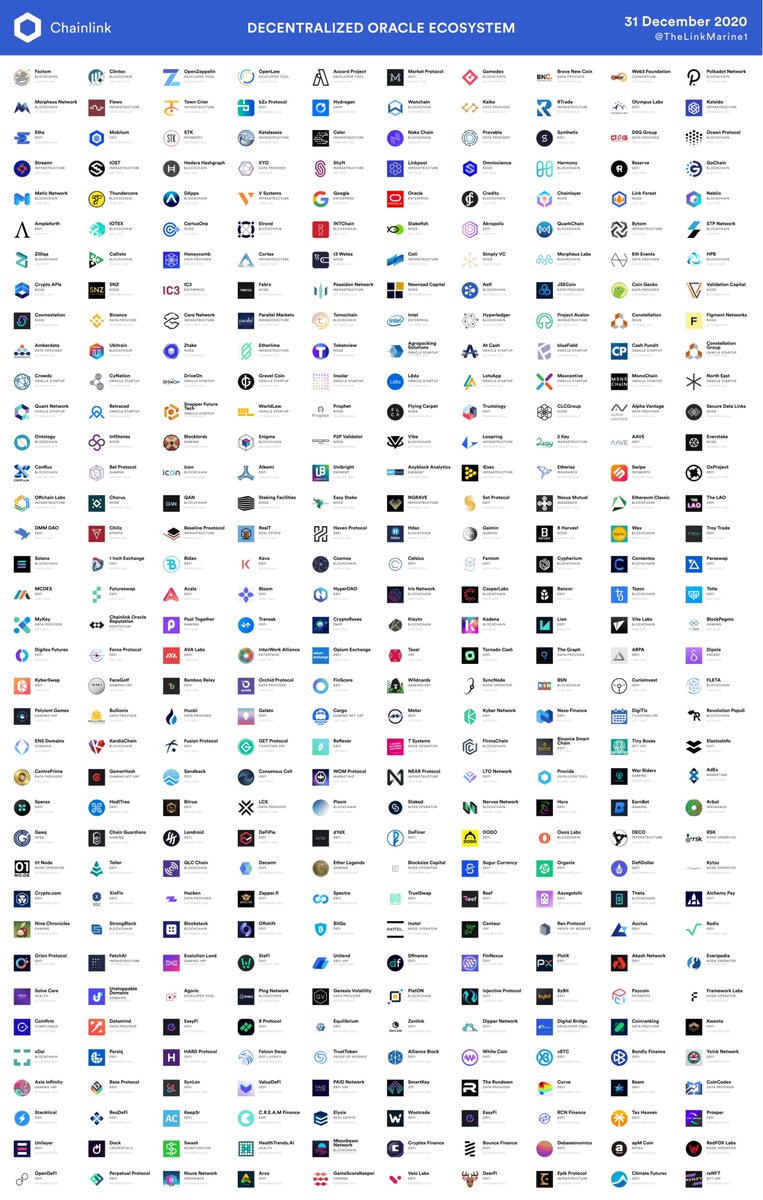
37/ A sample of #Chainlink users within each of these categories include
Lending:
@AaveAave
@CreamdotFinance
@bZxHQ
@RCNFinance
Derivatives:
@synthetix_io
@Opium_Network
@MonteCarloDEX
@SynLevdefi
Exchanges:
@loopringorg
@CurveFinance
@BreederDodo
@dydxprotocol
Lending:
@AaveAave
@CreamdotFinance
@bZxHQ
@RCNFinance
Derivatives:
@synthetix_io
@Opium_Network
@MonteCarloDEX
@SynLevdefi
Exchanges:
@loopringorg
@CurveFinance
@BreederDodo
@dydxprotocol
38/ Insurance:
@ArbolMarket
@etherisc
@NexusMutual
Stablecoins/Pegged Assets:
@PaxosGlobal
@TrustToken
@WrappedBTC
@defidollar
@renprotocol
Real World Assets:
@DMMDAO
@RealTPlatform
Rebase Tokens:
@AmpleforthOrg
@BaseProtocol
@ArbolMarket
@etherisc
@NexusMutual
Stablecoins/Pegged Assets:
@PaxosGlobal
@TrustToken
@WrappedBTC
@defidollar
@renprotocol
Real World Assets:
@DMMDAO
@RealTPlatform
Rebase Tokens:
@AmpleforthOrg
@BaseProtocol
39/ Asset Management:
@SetProtocol
@TornadoCash
Additional Tooling:
@bprotocoleth
@kp3r_network
Collectibles:
@AxieInfinity
@aavegotchi
@EtherLegends
Betting Platforms:
@PoolTogether_
@EarnBetCasino
Gaming:
@NineChronicles
@warriders
@SetProtocol
@TornadoCash
Additional Tooling:
@bprotocoleth
@kp3r_network
Collectibles:
@AxieInfinity
@aavegotchi
@EtherLegends
Betting Platforms:
@PoolTogether_
@EarnBetCasino
Gaming:
@NineChronicles
@warriders
40/ Chainlink also works with leading enterprises, institutions, and working groups in order to standardize oracle technology
World Economic Forum
Gartner
Google
Oracle
SWIFT
Baseline Protocol
InterWork Alliance
Hyperledger Avalon
China's BSN
EEA
IC3

World Economic Forum
Gartner
Oracle
SWIFT
Baseline Protocol
InterWork Alliance
Hyperledger Avalon
China's BSN
EEA
IC3
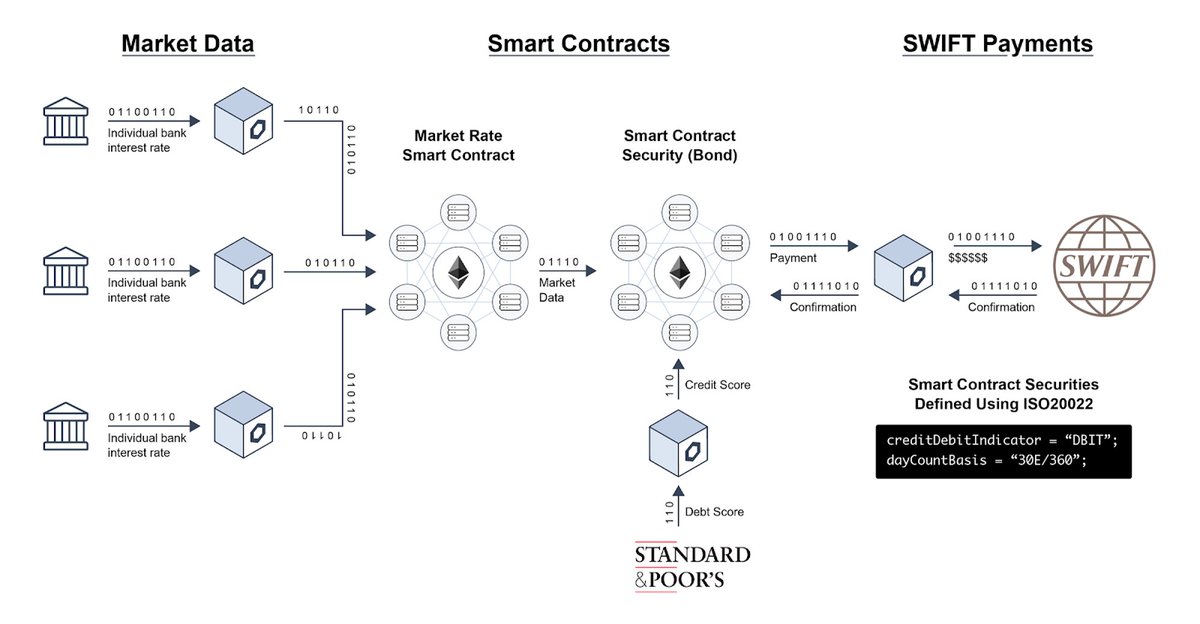

41/ There are now also a multitude of Chainlink service providers including
- market.link, a permissionless marketplace for nodes
- Reputation.link, a data analytics dashboard
- Numerous node operators such as @TSystems_MMS, @linkpoolio, and beyond
- market.link, a permissionless marketplace for nodes
- Reputation.link, a data analytics dashboard
- Numerous node operators such as @TSystems_MMS, @linkpoolio, and beyond
42/ To fund the growth of the ecosystem, the Chainlink Community Grants Program was created in order to
1) Integrate Chainlink into new blockchain environments
2) Improve Chainlink node and developer infrasture
3) Support numerous community initiatives
1) Integrate Chainlink into new blockchain environments
2) Improve Chainlink node and developer infrasture
3) Support numerous community initiatives
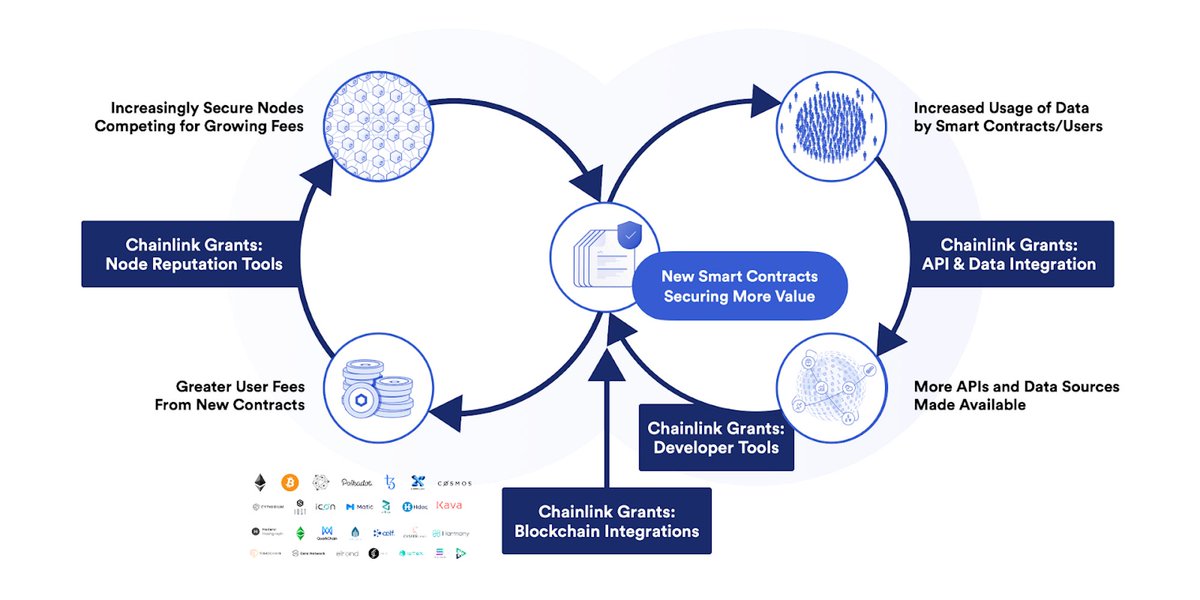
43/ Such grants include
Blockchains:
xDAI
BSN
Tezos
NEAR
Solana
Avalanche
Dev/node tooling:
LinkPool
Secure Data Links
ENS
Simply VC
Fiews
Anyblock Analytics
Researchers:
Guilia Fanti
Xiao Wang
Community:
Gitcoin
Etherisc / ACRE Africa
@TheLinkMarine1
Blockchains:
xDAI
BSN
Tezos
NEAR
Solana
Avalanche
Dev/node tooling:
LinkPool
Secure Data Links
ENS
Simply VC
Fiews
Anyblock Analytics
Researchers:
Guilia Fanti
Xiao Wang
Community:
Gitcoin
Etherisc / ACRE Africa
@TheLinkMarine1
44/ The #Chainlink co-founders have been building data driven smart contracts since at least 2014 when @Smart_Contract was created (before the launch of Ethereum)
The 50+ person team includes experts in blockchains, oracles, cryptography, machine learning, AI, and bizdev
The 50+ person team includes experts in blockchains, oracles, cryptography, machine learning, AI, and bizdev
45/ Some of the most prominent team members includes
Co-founder Sergey Nazarov (@SergeyNazarov)
Chief Scientist Ari Juels (@AriJuels)
Head of Engineering Ben Chan (@bencxr)
CTO Steve Ellis (@streamOfCo)
CMO Adelyn Zhou (@adelynzhou)

Co-founder Sergey Nazarov (@SergeyNazarov)
Chief Scientist Ari Juels (@AriJuels)
Head of Engineering Ben Chan (@bencxr)
CTO Steve Ellis (@streamOfCo)
CMO Adelyn Zhou (@adelynzhou)
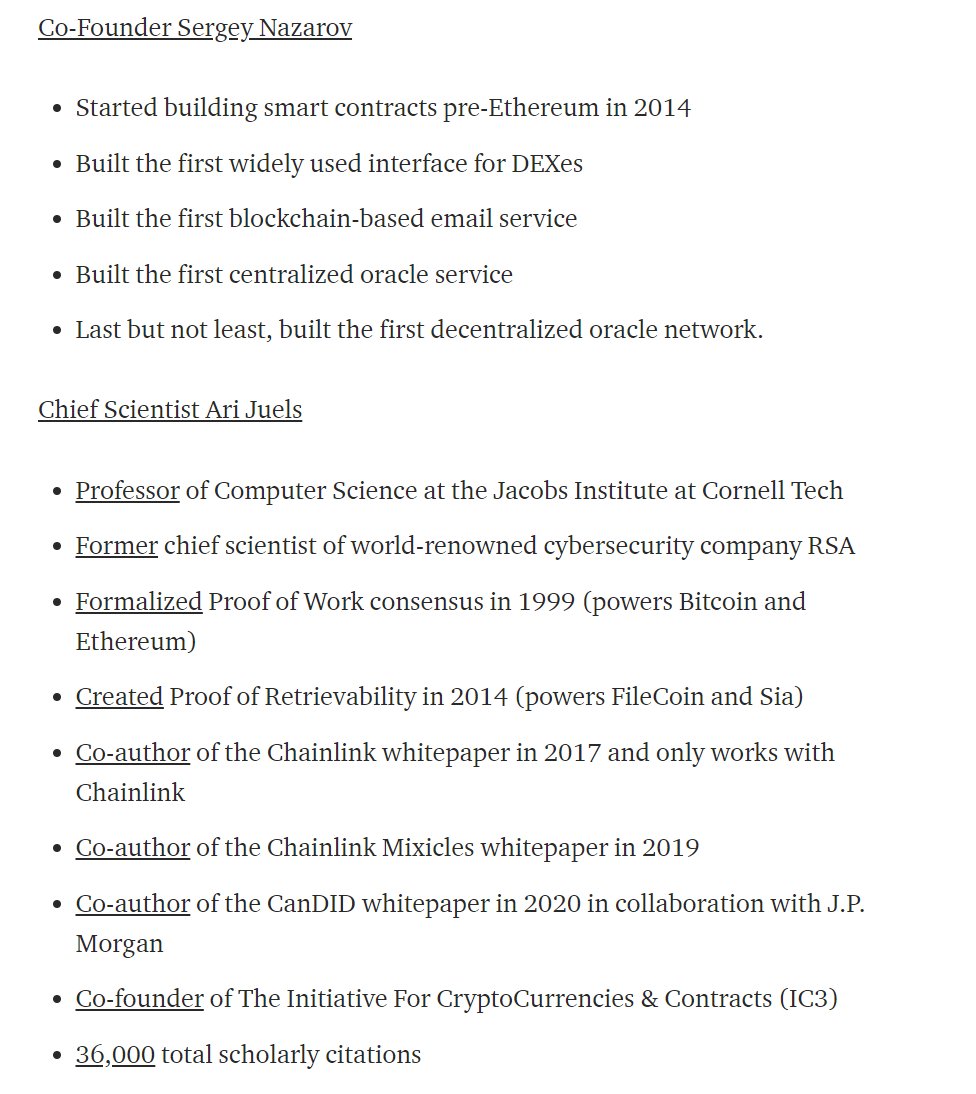
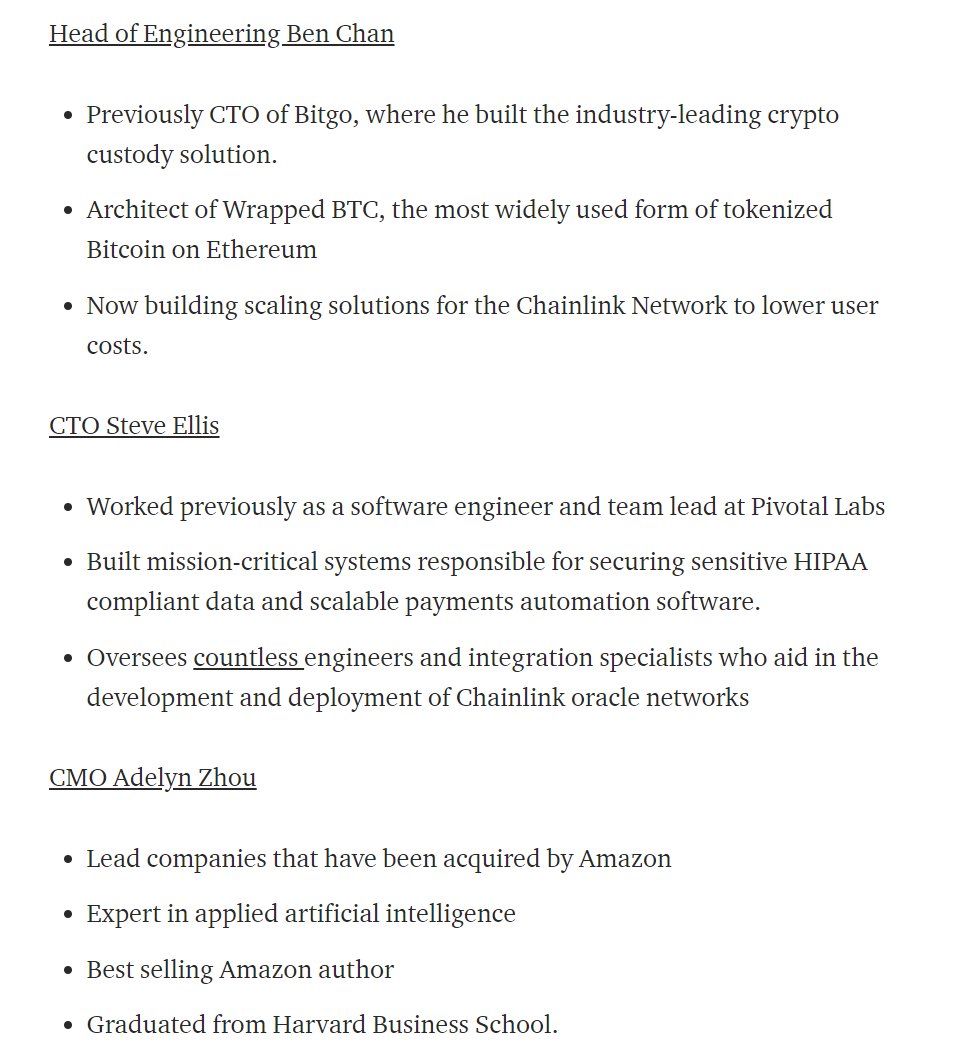
46/ The Chainlink Network is also support by a top tier list of accomplished academic and business advisors
Evan Cheng (@TheBeet1)
Andrew Miller (@socrates1024)
Tom Gonser (@tgonser)
This includes a full-time research team focused on improving the Chainlink Network

Evan Cheng (@TheBeet1)
Andrew Miller (@socrates1024)
Tom Gonser (@tgonser)
This includes a full-time research team focused on improving the Chainlink Network
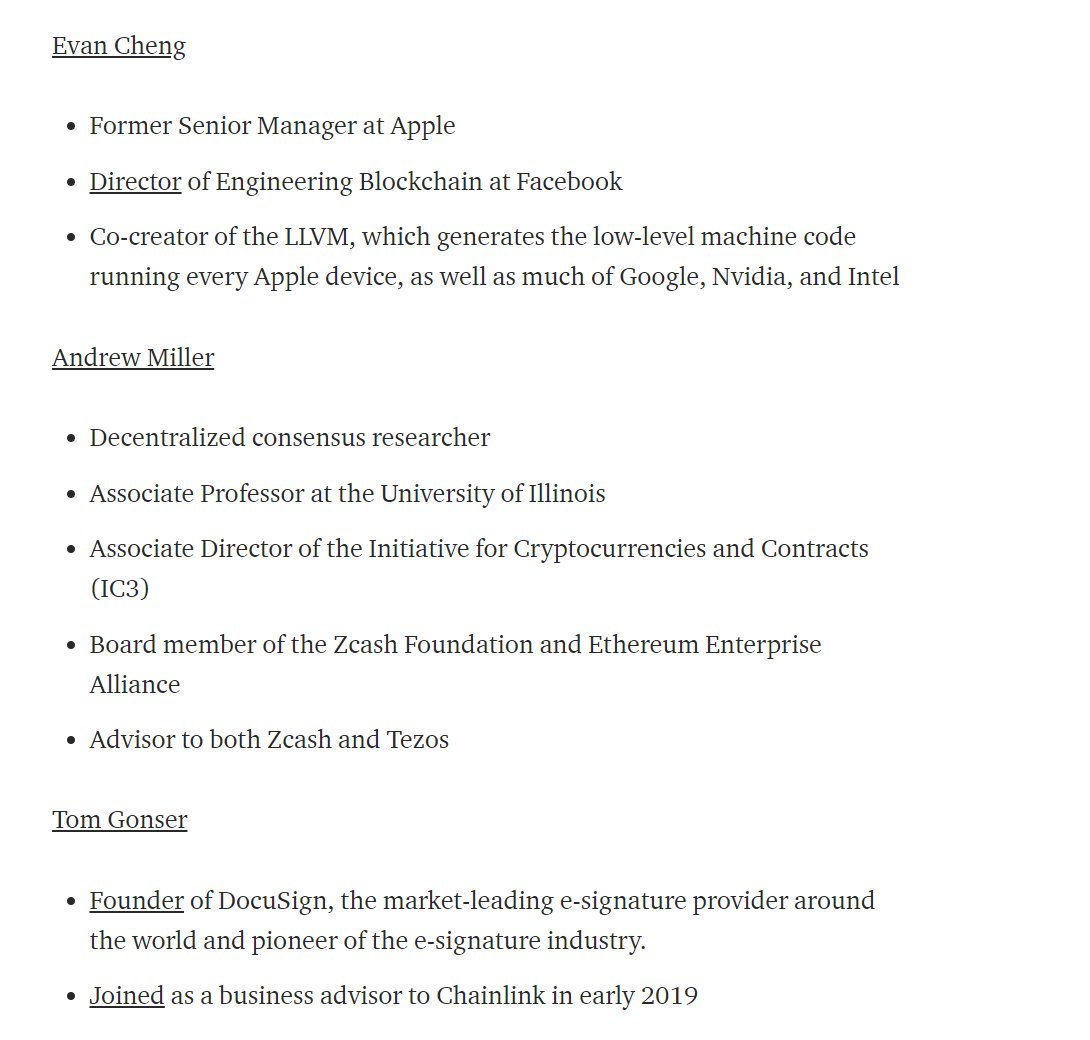
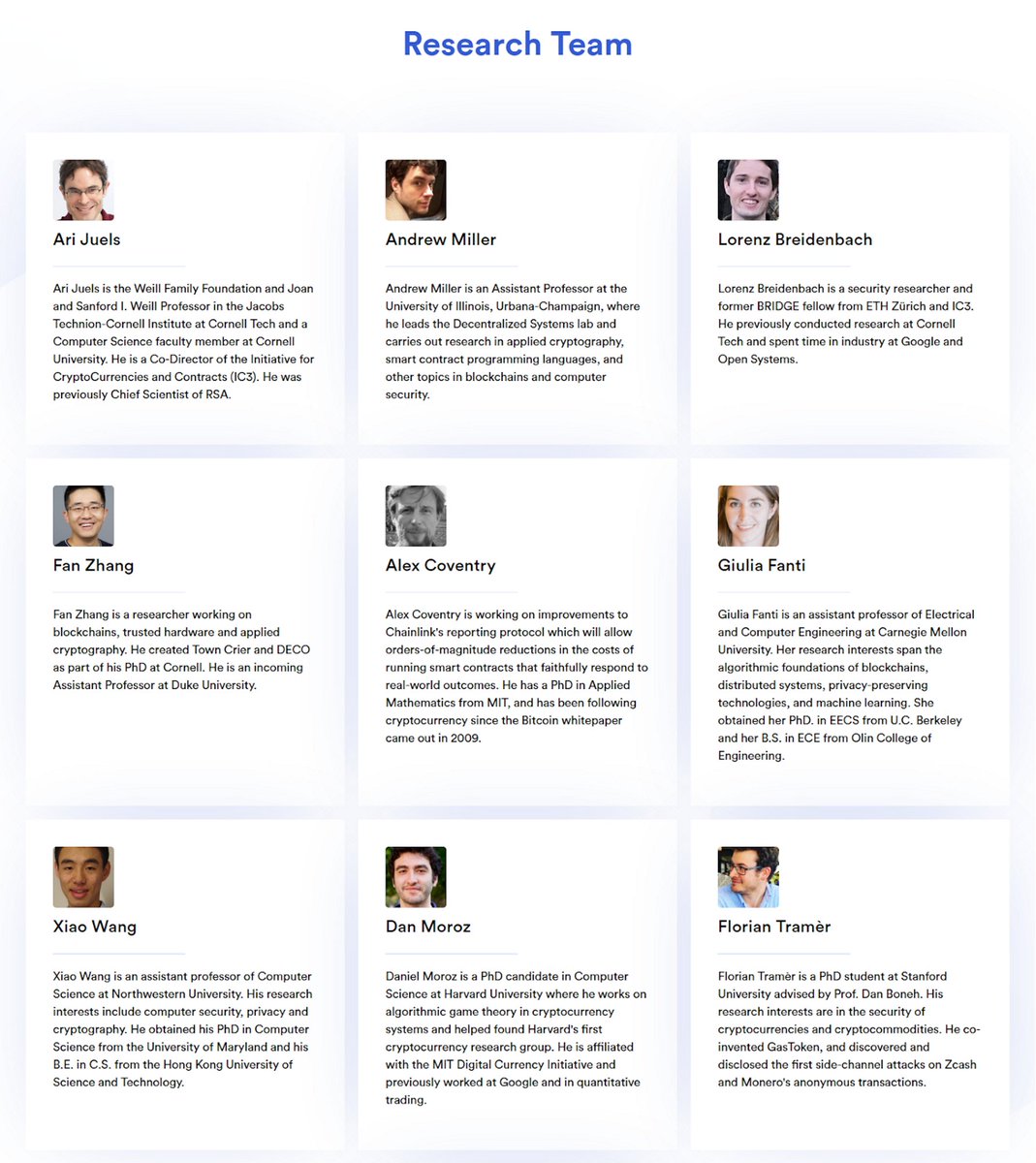
47/ Additionally, #Chainlink created the Smart Contract Summit (SmartCon) as an annual event to bring together DeFi developers, enterprises, dApp builders, node operators, researchers, and more
SmartCon #0 (2020) featured 8,000+ attendees and 130 speakers from around the world

SmartCon #0 (2020) featured 8,000+ attendees and 130 speakers from around the world


48/ It's important to note that blockchains, smart contracts, and oracles are not yet complete components
Many developments are currently under way including L2 Rollups, L1 sharding, zero knowledge proofs, high throughput L1s, formal verification, improved dev tooling, and more
Many developments are currently under way including L2 Rollups, L1 sharding, zero knowledge proofs, high throughput L1s, formal verification, improved dev tooling, and more
49/ Putting it all together, the #Chainlink Network has numerous qualities that lead to its status as the industry standard oracle solution
- Flexible architecture
- Defense in depth approach
- Market-leading adoption
- Strong token economics
- World-class academic and dev team
- Flexible architecture
- Defense in depth approach
- Market-leading adoption
- Strong token economics
- World-class academic and dev team
50/ #Chainlink allows blockchains and smart contracts to take the next major leap forward in reaching their true potential
Similar to how computers were completely transformed upon the arrival of the Internet (World Wide Web), Chainlink is the universal data layer of web3
Similar to how computers were completely transformed upon the arrival of the Internet (World Wide Web), Chainlink is the universal data layer of web3
51/ It’s now clear that blockchains (the body), smart contracts (the brain), and oracles (the senses) will form the foundation of a trustless third-party computing network that powers the world’s next-generation of digital agreements
The only component left is the soul
The only component left is the soul
52/ Like any technology, the God Protocols are what we as human beings make them to be. Tools are simply that, tools, and it’s up to us to use these tools to make the world a more fair, equitable, and transparent place for conducting business and honoring contracts
53/ Our ethics, commitment, and higher purpose must guide us in our efforts to apply blockchain-based smart contract and decentralized oracles to achieve the maximum social effect: users receive the outputs they deserve based on the true amount of input they put forward.
54/ And that's the thread my frens, I hope this information helped you on your journey of understanding the true implications of the God Protocols, I will leave you with one last quote
“The end of science is not to prove a theory, but to improve mankind.” — Manly P. Hall
“The end of science is not to prove a theory, but to improve mankind.” — Manly P. Hall
• • •
Missing some Tweet in this thread? You can try to
force a refresh



